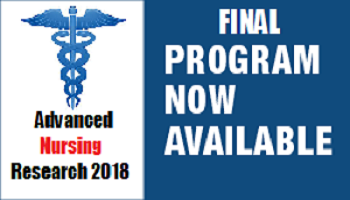
Ainsley James
Federation University Australia, Australia
Title: The use of visual art as a method to enhance health professionals’ communication with adolescents living with type 1 diabetes
Biography
Biography: Ainsley James
Abstract
Purpose: The purpose of this paper is to describe the use of visual media, as a person-centred approach that health professionals should consider during therapeutic interactions with adolescents living with type 1 diabetes. This paper reports on a research study that adopted visual media produced by young people living with type 1diabetes to share their experiences. The visual media functioned as both a conduit for communication and a strategy for establishing relationships.
Methods: Using van Manen's phenomenological approach, ten participants (nine females, 1 male) aged 16-24 years participated in the research. Each participant created artwork representing their lived experience in photographs, drawings and collages. Participants provided interpretations of the artwork, which complemented a phenomenological interview exploring their experience of living with type 1 diabetes. This process added depth, richness and rigour to their shared stories and informed the analysis of data and interpretation of findings.
Results: Art in the form of visual media is a powerful representation of lived experience and provides young people with a creative channel to express themselves. Using art as an approach to therapeutic interactions enhanced communication between participants and researcher by engaging the participants in the research process, enhancing therapeutic interactions by focusing on the visual media produced, and facilitating conversations regarding lived experience; all resulting in rich descriptions of the lived experience of type 1 diabetes. Insights and future opportunities are provided for researchers contemplating the use of art in qualitative research studies, such as phenomenology and lived experience.
Conclusions: Art is a valid and creative form of research data and is also a valuable tool for qualitative researchers wanting to involve young people as participants. Adopting age appropriate communication methods is a necessary skill health professionals must develop if they are to be effective practitioners.

